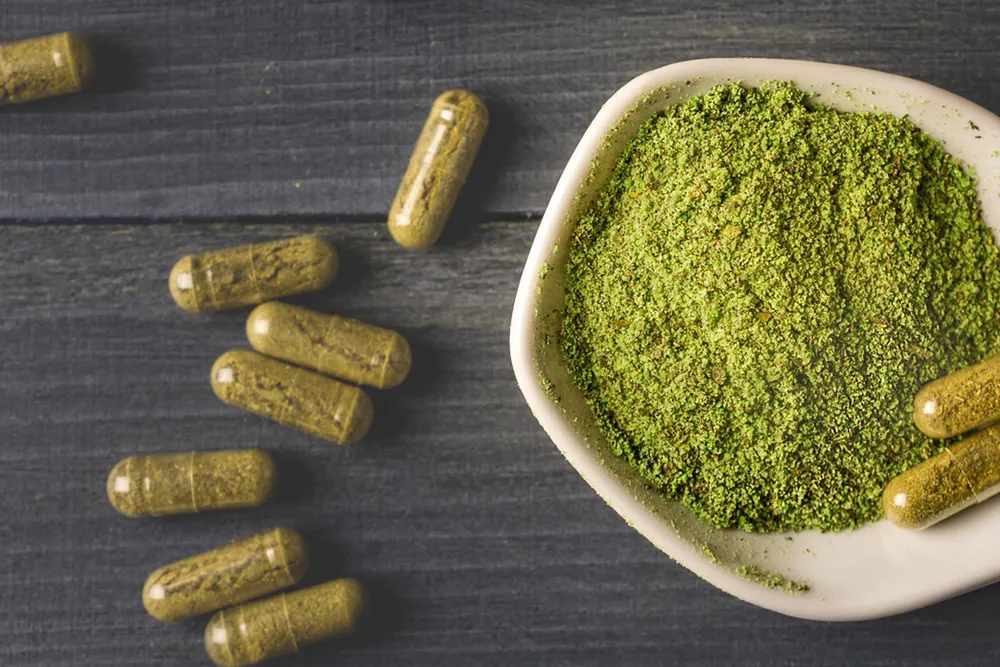What Is The Substance Called Kratom?
Kratom, whose proper name is Mitragyna, is a plant from Southeast Asia. It belongs to the same family of plants as coffee and gardenias. Kratom has been used as an herbal medicine in Thailand and nearby countries for hundreds of years for various ailments. It is most commonly used for energy boosts as well as mild pain relief. What makes it dangerous, however, is the fact that it’s a dose-dependent stimulant and has opiate-like effects. This similarity can make it potentially useful for the withdrawal symptoms of opiate addiction.
In the last two decades, there has been a substantial increase in the rates of kratom usage in North America and Europe both as a recreational drug and for the self-management of pain.
The effects of kratom are dose-dependent, but heavier use will result in a high that lasts for several hours.
Is Kratom Dangerous Or Harmful?
Research about the effects of kratom use is limited and there have been few clinical trials conducted to determine whether it is safe for human use. Most of the current knowledge regarding this substance comes from anecdotal reports by users and doctors, as well as some animal experiments.
Kratom is not a controlled substance in the US. Therefore, it’s easy to find Kratom sold on the internet as well as in head shops. It comes in various forms, including:
- Loose leaves to make tea
- Capsules
- Compressed tablets
Researchers have found more than numerous biologically active chemicals in the drug, including several that bind opioid receptors in the human brain and have the potential to lead towards physical dependence and addiction.
Although the plant has a long history of use as an herbal medicine in Southeast Asia, kratom abuse is also well known in the region. The drug has been banned, except for strict medical usage, in Thailand, Malaysia, and Myanmar due to its addictive properties.
Finally, some chemicals found in kratom interfere with drug-metabolizing enzymes in the liver and may cause dangerous interactions with other drugs or medications. Overdoses—some of them fatal—have been reported in users who have taken kratom in combination with other drugs.
What Are The Short Term Effects Of Kratom?
Because of the unique mix of chemicals in kratom, the short-term effects of the drug are complex and vary widely. The balance between stimulant-like and opiate-like effects depends on the dose taken, and different users have reported significantly different experiences with the drug even when taking the same dose.
At a low dose (1-5 g) of kratom, stimulant-like effects are the most common. These are felt within 10 minutes and last for 60 to 90 minutes. While reports by users indicate that most people find these effects pleasant, some users experience an uncomfortable sense of anxiety and agitation. The primary stimulant-like side effects of kratom are similar to amphetamine, though less intense, and include:
- Increased energy and alertness
- Decreased appetite
- Increased sociability
- Heightened libido
Moderate to high doses (5-15 g) of kratom have primarily opioid-like effects that last for several hours. The euphoric “high” induced by Kratom is reportedly less intense than that of other opioid drugs, and some users describe the experience as unpleasant or dysphoric. Other opiate-like effects include:
- Analgesia (pain reduction)
- Drowsiness
- Calm, dreamlike mental state
- Cough suppression
- Reduction in symptoms of opioid withdrawal
Doses of kratom greater than 15g have effects similar to high doses of opioids, including extreme sedation and a loss of consciousness in some cases.
What Are The General Dangers Of Kratom Use?
There are several side effects of kratom use that range in severity from inconvenient to dangerous. Like the sought-after effects listed above, its side effects depend on the dose taken. Moreover, they are similar to those found both for stimulant drugs and opiates, including:
- Pupillary constriction (tiny pupils)
- Facial flushing (blushing)
- Tremors or loss of motor coordination
- Constipation
- Sweating
- Dizziness
- Nausea and vomiting
- Itching
Serious toxic effects appear to be rare among reports by users and healthcare providers, but there is little information available to estimate the true long-term side effects and dangers of kratom use. Most serious toxic reactions have been associated with high doses of kratom (>15 g) and have been characterized by seizures.
The dangers of kratom use appear to be especially high in the case of “Krypton,” which is an herbal product that sellers market as an especially potent form of kratom. Krypton is actually a combination of kratom and O-desmethyltramadol, a chemical otherwise expressed as a metabolite of the pain medication tramadol (Ultram). This combination increases the depressive effects on the central nervous system and Krypton use has been blamed for several deaths in Sweden.
What Are The Effects Of Kratom Withdrawal?
In one study, more than 50% of people who used the drug regularly for at least 6 months developed a kratom dependency. Dependent users of the drug suffer physical withdrawal symptoms similar to those of opiates if they stop taking it suddenly. Some of the symptoms of kratom withdrawal include:
- Irritability
- Sweating
- Nausea
- High blood pressure
- Diarrhea
- Runny nose
- Joint and muscle pain
- Insomnia
- Intense craving for kratom
Taking Caution With Kratom
Because of the highly addictive nature of Kratom, we do not recommend to consume the substance in any form for those in addiction recovery. Above all else, if you find yourself or a loved one in a cycle of addiction, reach out to a professional at Impact Recovery today. Whether it’s the start of your healing journey or a restart, you’ll find the support, resources, and help you need.
